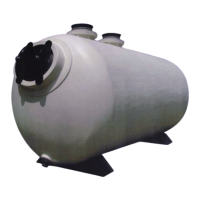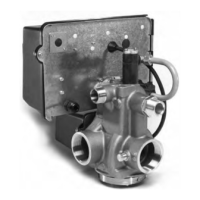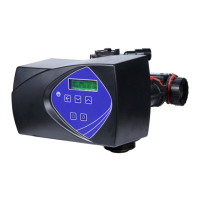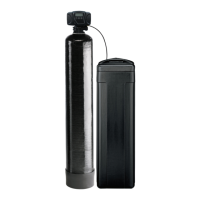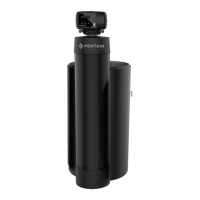Installer Manual Foleo - Commissioning
Ref. MKT-IM-038 / C - 15.11.2019 67 / 112
2. When refill cycle is finished, the piston moves to brine draw position. Check to see in the brine
tank if the water level decrease.
3. Once the draw function is observed and confirmed (level of water in the brine tank or cabinet has
decreased), you may go through each remaining cycles pushing on the regen button until rapid
rinse. Leave the complete cycle run to be sure that the brine draw in the system during draw test
is rinsed out.
6.1.3. Startup
1. Fill the brine tank in the cabinet with salt.
2. Adjust the safety brine valve in the brine well to make sure the overflow elbow is installed above
the float level.
3. After the softener has been running a few minutes in service, proceed to hardness test on outlet
water to make sure the water is treated as per requirements, and eventually adjust the mixing
device accordingly.
NOTE
Pentair advise to set a residual hardness between 50 and 100 mg/L of CaC0
3
.
6.2. Cleaning, disinfection and sanitization
The construction materials of the modern water softener will not support bacterial growth, nor will
these materials contaminate a water supply. During normal use, a softener may become fouled with
organic matter, or in some cases with bacteria from the water supply. This may result in an off-taste
or odour in the water. In this case, the tank of the softener must be cleaned and disinfected.
Some softeners may need to be disinfected after installation and some softeners will require periodic
disinfection during their normal lifetime.
Depending on the conditions of use, the softener type, the type of ion exchanger, and the disinfectant
available, a choice can be made among the following methods.
6.2.1. Cleaning of softeners
Make sure the brine tanks remains free from debris, waste, scraps that could be drown in the valve
during brine draw cycles of regenerations. Make sure the softener and its parts remains clean to
ensure proper function. Note that camshaft positioning is made by a optical sensor. Should this
optical sensor be obstructed, malfunctions may happen.
6.2.2. Disinfection with sodium or calcium hypochlorite
These materials are satisfactory for use with polystyrene resins, synthetic gel zeolite, greensand and
bentonites.
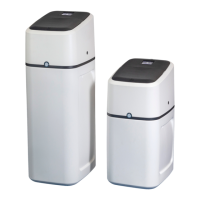
